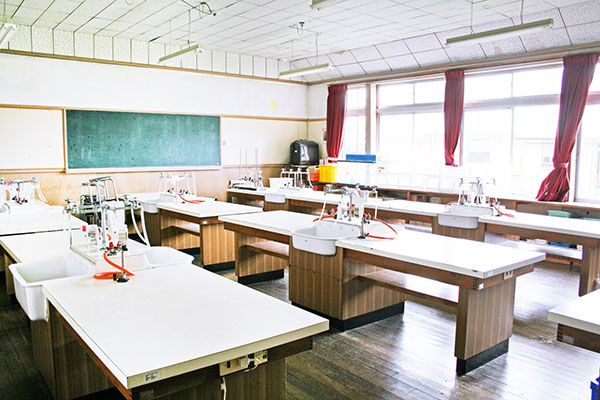News
How Should Science Be Taught in High School? Updated in August 2020
On June 4, 2016 Science Council of Japan (SCJ) hosted a symposium titled “The Future of High School Science Education.” There was a fierce exchange of opinion, almost like a battle, which is quite rare for a gathering of this kind.
Physicist Dr. Yasushi Suto was the master and mediator of the ceremony. He chairs the subcommittee for reconsidering the current high school science education. The subcommittee's work came out in February as SCJ's formal proposal.
The proposal introduces a new course tentatively titled “Science Basics” to the current high school curriculum. It will be compulsory, and will be included as one of the compulsory subjects in the National Center Test for University Admissions. “In this modern era, where science and technology are indispensable factors, people should show interest in science and science-related decisions must not be left to experts. Ideally, Japan's school system should be able to provide basic education in physics, chemistry, biology and earth science for all students so they can integrate and develop scientific ways of thinking,” declares the proposal.

In the current system, there are both “basic” and “advanced” courses in the four disciplines (Physics, Chemistry, Biology and Earth Science). Students planning to major in science are obligated to take both basic and advanced courses. Even if you are not going to major in science, students are minimally required to take some basic courses. Furthermore, there is another new subject titled “Science and Human Life.” This course picks themes across all four disciplines which are strongly related to our everyday life and aims to nurture scientific ways of thinking.
As for compulsory courses in high school, Ministry of Education, Culture, Sports, Science and Technology (MEXT) guideline states that either you take “Science and Human Life” in addition to one course from Basic Physics, Basic Chemistry, Basic Biology or Basic Earth Science. Or you must take 3 basic courses if you are NOT taking “Science and Human Life.” From this, we can see that some students may end up studying one discipline only during 3 years of high school.
Because each subject is counted as 2 credits in the current MEXT guideline, the total number of compulsory science credits range from 4 to 6 credits. Credits for advanced courses account for 4 credits each but they are NOT compulsory. SCJ designates their new “Science Basics” course to be compulsory and to be allotted 6 to 8 credits. “Science Basics” is similar to “Science and Human Life” as it crosses all four disciplines but the number of credits and depth of course content is obviously different. We can see that SCJ is finding the current situation insufficient, and is trying to place emphasis on “Science Basics” by incorporating elements of all four disciplines (e.g. Physics, Chemistry, Biology and Earth Science).
However, this June 4 symposium showed that the SCJ proposal was unacceptable to MEXT officers. Particularly, the officer in charge of elementary/junior high school education was opposing the proposal with some anger. For the current basic courses, MEXT's guideline for high school science provides the following explanation: “The courses were designed to be more simple and easier to understand so that many students would take these courses for the purpose of attaining fundamental scientific knowledge. In regard to fast-evolving contents that need immediate update, MEXT reviewed them to emphasize observation and experiment so that the learning process would include research activities.”
The officer in charge of elementary/junior high school education at MEXT probably felt undermined by SCJ's rejection of the current science course content which was approved under thorough discussion by Central Council for Education─MEXT's internal council. In fact, in the high school teaching guideline, the number of compulsory courses during 3 years of high school amount to 31 to 35 credits. Out of that, the 4 or 6 credits allotted to science is NOT scarce compared to the 2-4 credits for Japanese, or the 2-3 credits for Mathematics. This backs up the fact that MEXT places weight on science.
Furthermore, board members of educational organizations and university professors specializing in training of high school teachers point out that its implementation is not realistic. In a survey given to high school science teachers at the venue of this symposium, only 10% agreed to the new proposal. Most teachers did not agree due to “insufficient compatibility with current textbooks and the National Center Test for University Admissions” or “lack of training time to familiarize teachers with new course contents.”
The SCJ proposal admits that it is not easy to introduce “Science Basics” at once. In the meantime, it advises all four basic courses (in Physics, Chemistry, Biology and Earth Science) to become compulsory, but not to exceed the current 6 credits allotted to compulsory science courses. In doing so, SCJ proposal also suggests to be more selective of the contents to be taught in these basic courses. However, the officer in charge of elementary/junior high school education was not convinced.
Today, dealing with natural disasters like earthquake is an imminent topic to us. Many Japanese people have never taken earth science or studied about earthquakes and volcano since high school. Can Japan keep neglecting this kind of outcome? The SCJ proposal highlights the underlying crisis they are feeling about Japan's science education. Attaining unanimous consensus to alleviate curricular imbalance in high school science is not easy. It seems many participants had felt this way at this symposium. (T.K)
Koiwai Tadamichi
Public Relations Advisor
China Research and Sakura Science Center
Japan Science and Technology Agency







